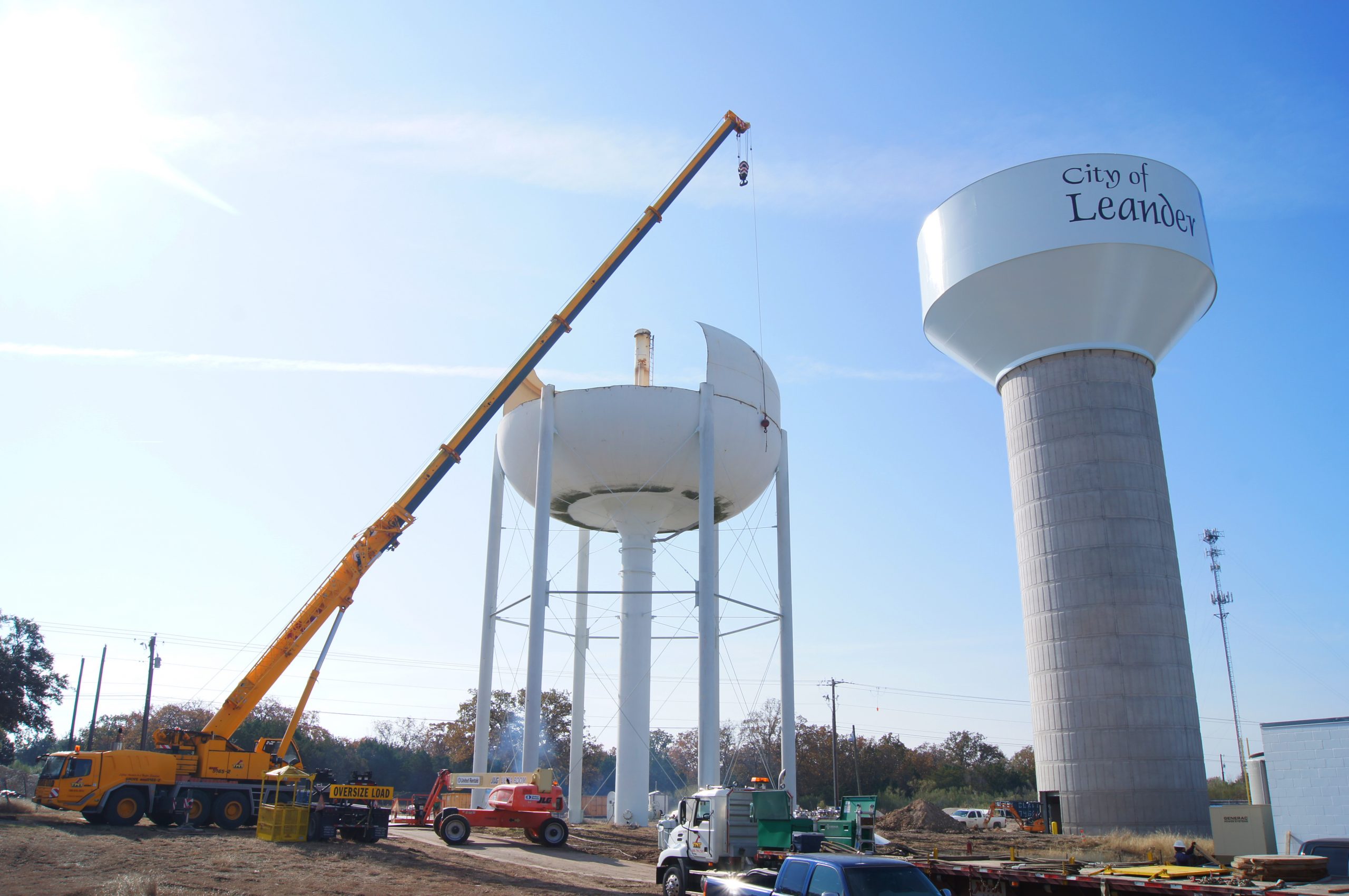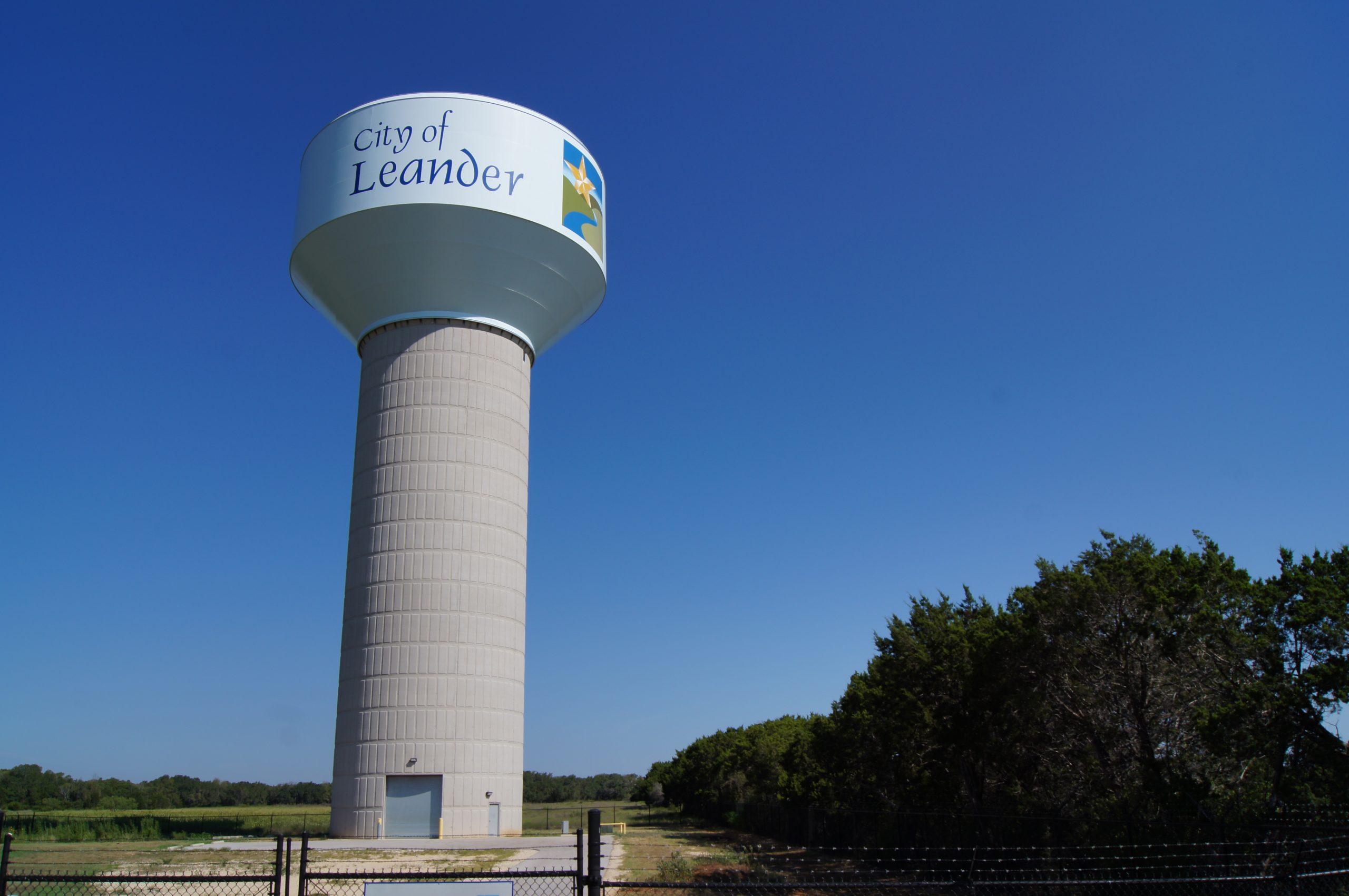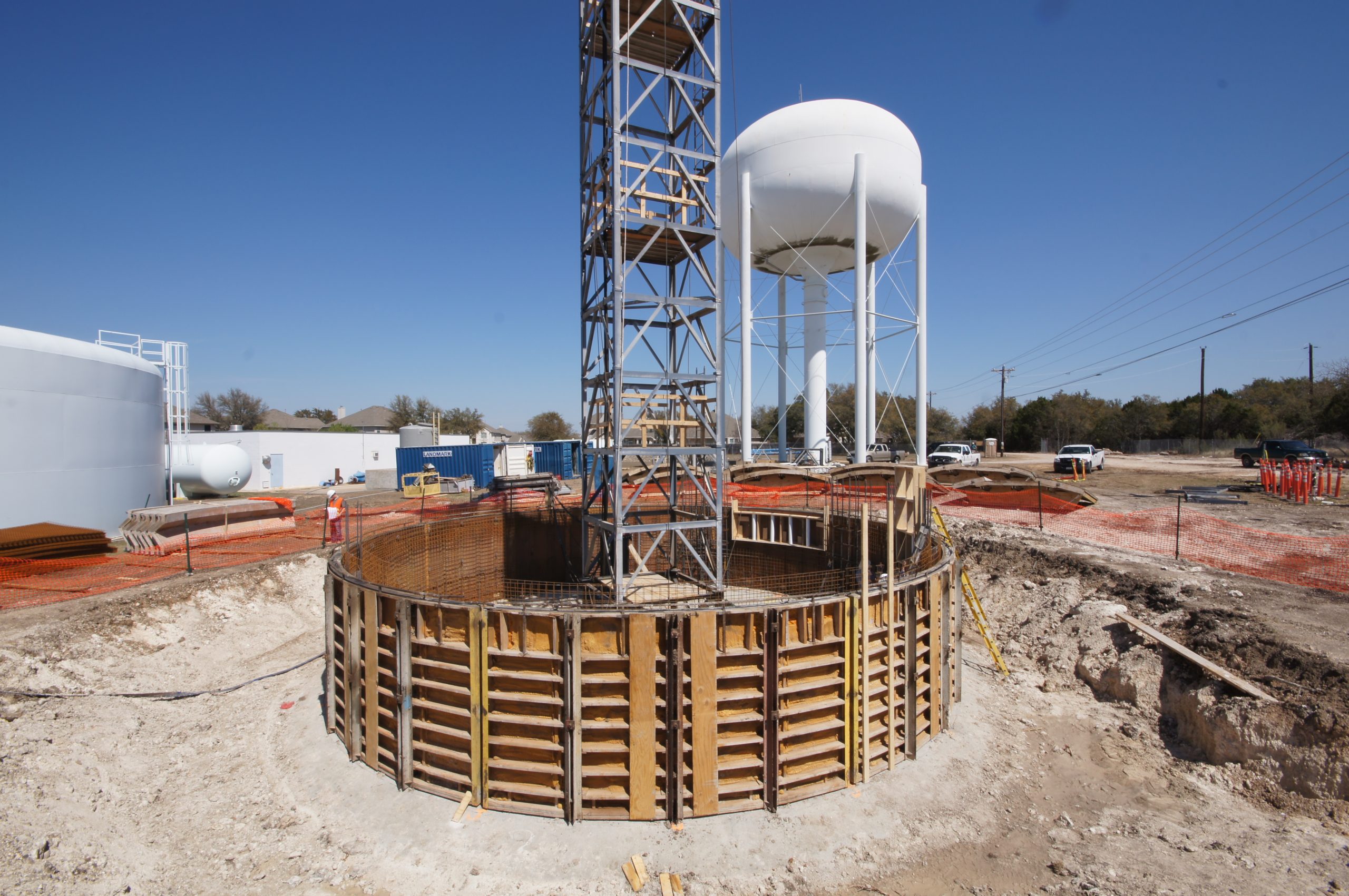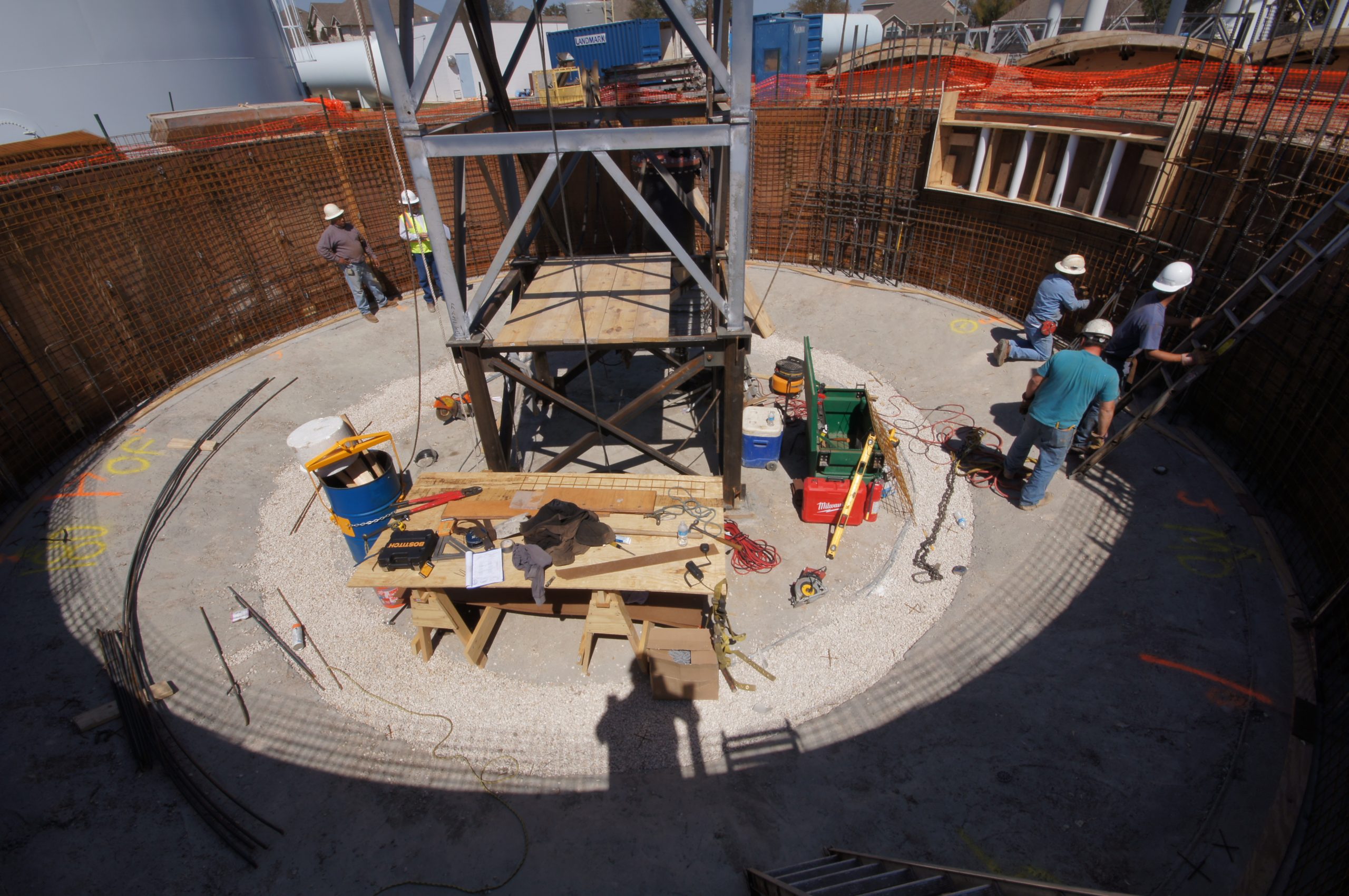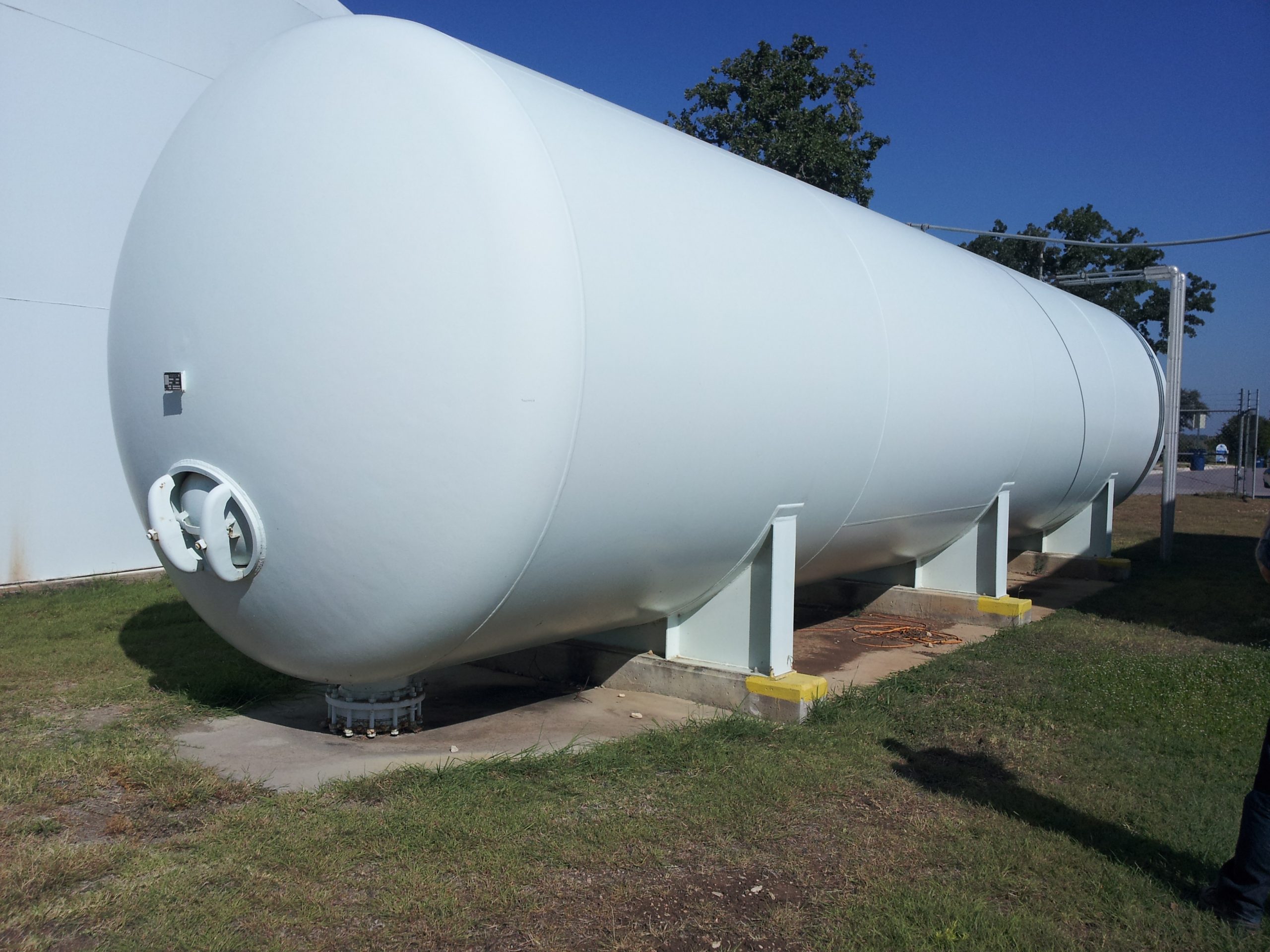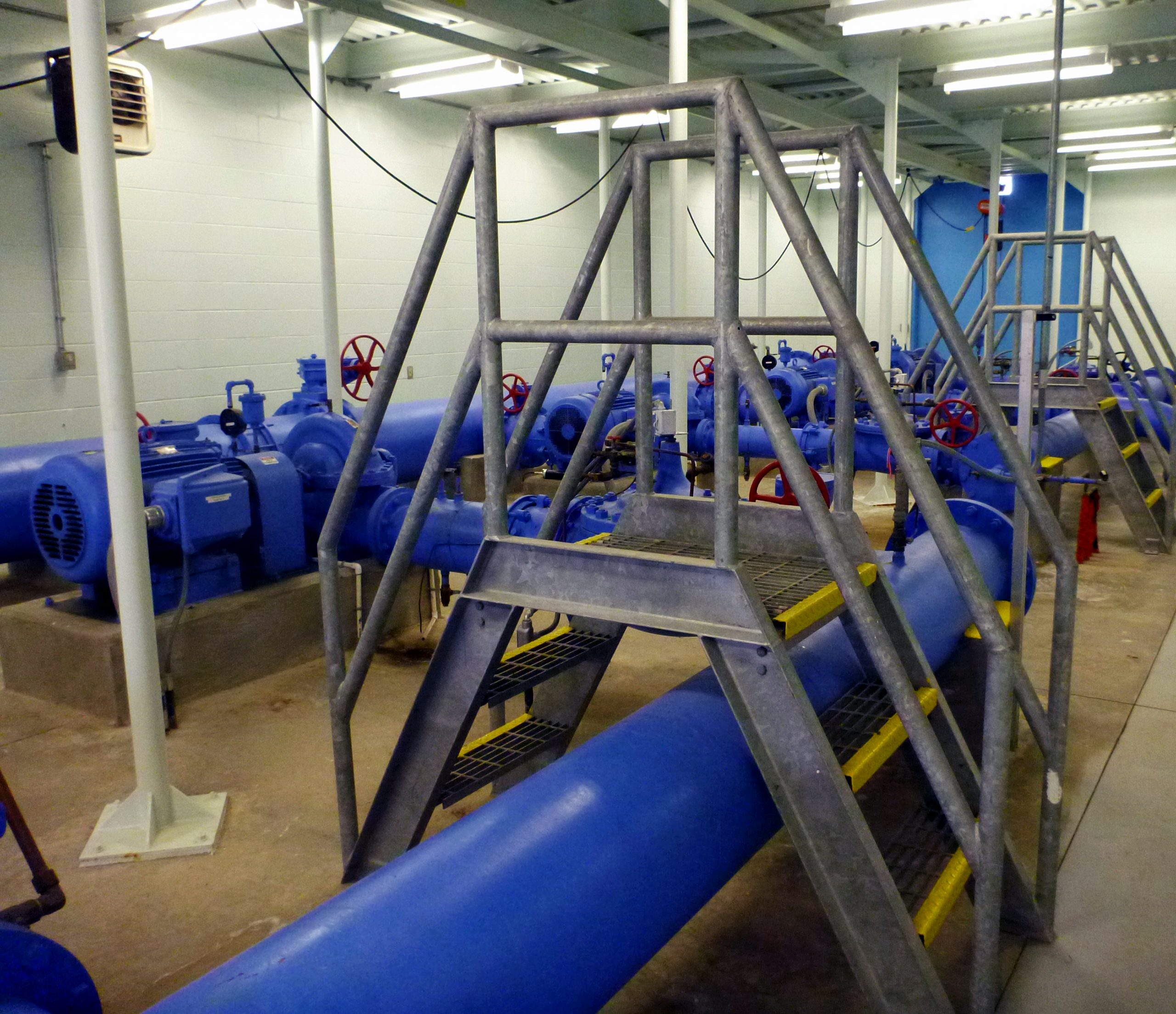City of Leander Crystal Falls Pump Station Improvements
New Demands from Rapid Growth in Leander Require Improvements to the Water System
Project Purpose
Rapid growth in Leander placed new demands on the water system, requiring additional storage and pumping capacity. The Upper Pressure Plane for the City of Leander had been served by a hydro-pneumatic tank system, which is not as reliable in a large fire situation where power can be interrupted, posing a significant risk in drought conditions in a heavily wooded region. Additionally, the City wanted to rectify several areas within their service area that experience low pressures during periods of high demand. In response to these needs, KFA designed a new 1.25-million-gallon (MG) elevated storage tank (EST) to replace the existing hydrotank, and proposed expanding the existing Crystal Falls Pump Station that supplies water to the 1270 pressure plane to handle anticipated system demands.
Project Approach
KFA was retained by the City of Leander to plan, design, and provide construction administration for the pump station expansion. The project included construction of a 1.25 MG, 170-foot-tall EST, improvements to an existing pump station to increase capacity and account for the additional head requirements, and reconfiguration of pressure zones throughout the service area.
The existing pump station consisted of six pumps: three 60 horsepower (HP) pumps providing 5,000 gallons per minute (gpm) to the 1200 pressure plane, and three 125 HP pumps providing 2,500 gpm to the 1270 pressure plane. As part of the proposed improvements, the 1200 pressure plane was eliminated; therefore, the existing 60 HP pumps had to be modified or replaced to pump to the 1270 pressure plane. After examining several options, KFA determined that replacing the existing 60 HP pumps with new 125 HP pumps would provide a new firm capacity to the 1270 pressure plane of 8,750 gpm. KFA prepared construction documents for the pump station improvements, including the drawings and specifications for the new pumps, the new EST, and the demolition of an existing 0.5 MG EST.
The project included the following unique challenges:
- Demolition: The project required an existing 0.5 MG EST to be demolished and removed from the site.
- Rearrangement of pressure zones: As part of this project, the boundaries of the City’s pressure zones were modified to supply better pressure to various areas. Using the WaterCAD model of the City’s system, KFA identified locations for 10 new main lines and 90 individual service pressure reducing valves to be included in the design.
- Maintaining service during construction: Approximately 75% of the City’s water supply was routed through the Crystal Falls tank site and pump station, which meant that KFA and City staff needed to carefully sequence and phase the proposed work to maintain water service at all times. The project required us to replace three existing pumps and revamp the pump controls. The plans included detailed sequencing notes, and numerous meetings were held during construction specifically related to construction phasing. Working closely with the City’s operations staff and contractor allowed us to maintain service throughout construction.
- Work space: Existing power lines, water tanks, adjacent residences, and other improvements created space constraints for construction. KFA and City staff coordinated with Pedernales Electric to shut down a portion of overhead electrical lines to make room for the cranes and equipment needed for the construction of the tank.

This is one of my favorite projects I've worked on during my career, with complex and multi-faceted engineering problems to solve and significant coordination with the client and contractor. It’s also rare that we get to work on a project involving one of the tallest structures in Williamson County that can be seen for miles around.
Dale Murphy, PE, Project Manager
K Friese + Associates (KFA)
Project Results
The new 170-foot-tall Crystal Falls EST improves service to Leander residents by providing additional storage and pumping capacity. The project was completed in 2014.

